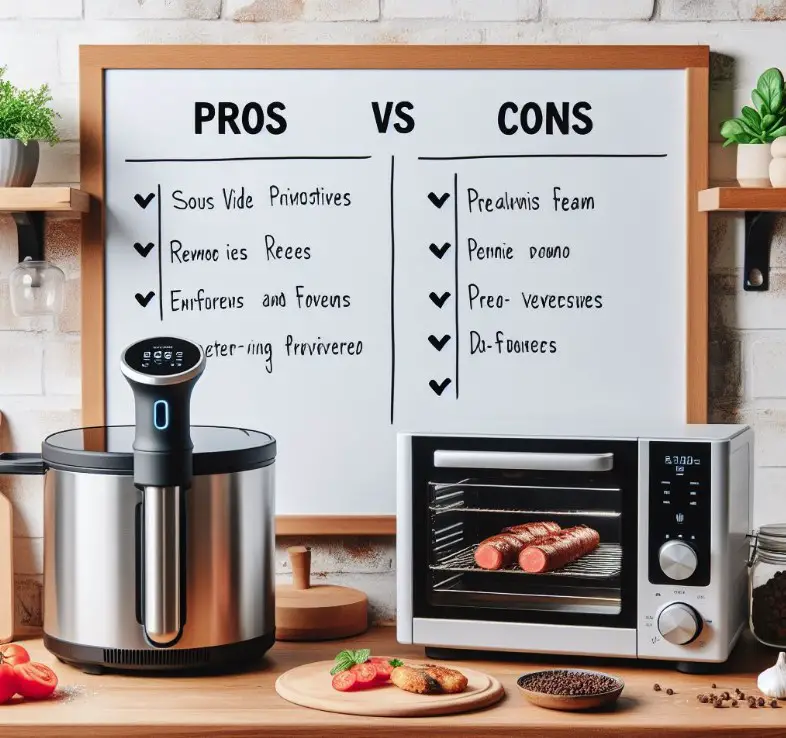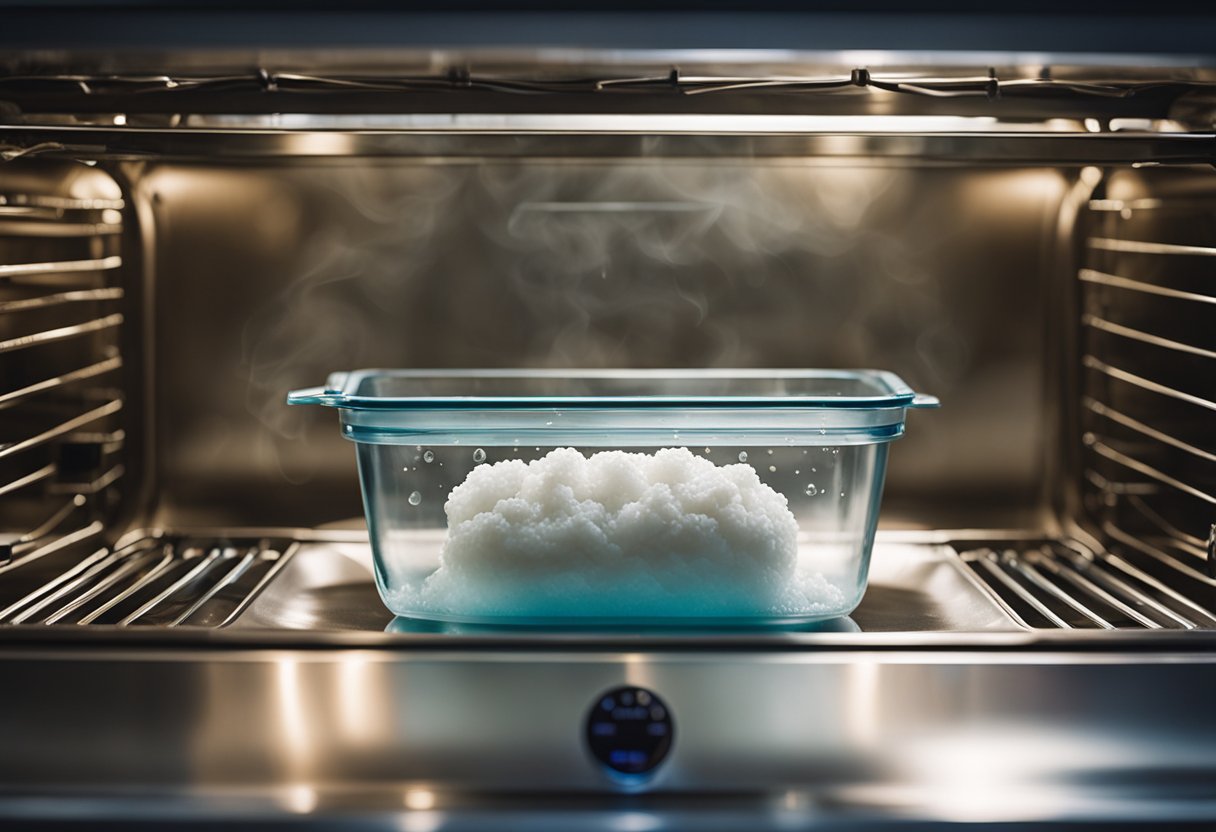
As someone who enjoys cooking, I am always looking for new and innovative ways to prepare meals. Two methods that have gained popularity in recent years are sous vide and steam oven cooking.
Both techniques offer unique benefits and drawbacks, and it can be challenging to determine which is best for a particular dish or cooking situation. In this article, I will explore the differences between sous vide and steam oven cooking and provide insight into when each method might be the better choice.
Sous vide is a French term that translates to “under vacuum.” This cooking method involves sealing food in airtight plastic bags and cooking it in a water bath at a precisely controlled temperature. In contrast, steam ovens use moist heat to cook food.
The oven pumps steam through the cooking chamber, allowing it to conduct heat more efficiently than traditional ovens. While both methods use different techniques to cook food, they share the benefit of precise temperature control, making them ideal for cooking delicate or finicky dishes.
Understanding Sous Vide and Steam Ovens
Definition and Basics of Sous Vide
Sous vide is a cooking method that involves immersing food in a precisely temperature-controlled water bath for an extended period. The food is vacuum-sealed in a plastic bag to prevent moisture loss and to ensure even cooking.
The temperature is set to the desired level, and the food is cooked slowly and gently until it reaches the desired doneness. This cooking method is popular among professional chefs and home cooks alike because it produces consistent results and enhances the natural flavors and textures of the food.
Definition and Basics of Steam Ovens
Steam ovens, on the other hand, cook food by steaming it. These ovens generate steam from boiling water and use the hot vapor to cook the food. The food is placed in a basket or pan, and the steam is directed at it. This cooking method is popular because it preserves the natural nutrients and flavors of the food and is ideal for cooking vegetables, fish, and delicate foods.
Sous vide and steam ovens are both popular cooking methods that use moist heat to cook food. However, they differ in terms of their temperature control, cooking time, and the type of food they can cook. Sous vide requires a precise temperature control and longer cooking times, while steam ovens are faster and can cook a variety of foods.
In summary, sous vide and steam ovens are two different cooking methods that use moist heat to cook food. Sous vide is ideal for cooking meat and other proteins because it produces consistent results and enhances the natural flavors and textures of the food.
Steam ovens, on the other hand, are perfect for cooking vegetables, fish, and delicate foods because they preserve the natural nutrients and flavors of the food.
Comparison of Cooking Techniques
Sous Vide Cooking Technique
Sous vide cooking is a low-temperature cooking technique that involves vacuum sealing food in a plastic bag and then immersing it in a precisely temperature-controlled water bath for an extended period.
This cooking technique is known for producing tender and flavorful results. The sous vide cooking technique is perfect for cooking meats, fish, and vegetables because it allows the food to cook in its natural juices, resulting in a tender and juicy texture. The low-temperature cooking also ensures that the food is cooked evenly and retains its nutrients.
Steam Oven Cooking Technique
Steam oven cooking is a cooking technique that uses moist heat to cook food. Steam ovens are smaller than traditional ovens and use steam to conduct heat more efficiently, allowing you to stack more food in them than you would in a traditional oven.
Steam oven cooking is perfect for cooking vegetables, seafood, and poultry because it helps to retain the food’s natural flavor and nutrients. The moist heat also ensures that the food is cooked evenly, resulting in a tender and juicy texture.
When it comes to heat transfer, the sous vide cooking technique uses dry heat, while steam oven cooking uses moist heat. Moist heat cooks food more evenly, while dry heat can brown food and give it a crisp exterior.
The sous vide cooking technique is perfect for achieving a consistent texture throughout the food, while steam oven cooking is perfect for retaining the food’s natural flavor and nutrients.
In summary, both the sous vide cooking technique and steam oven cooking technique have their unique benefits. The sous vide cooking technique is perfect for achieving a consistent and tender texture throughout the food, while steam oven cooking is perfect for retaining the food’s natural flavor and nutrients.
Benefits and Drawbacks
Advantages of Sous Vide
Sous vide cooking has several advantages that make it a popular cooking method. One of the biggest advantages of sous vide cooking is that it helps to retain the moisture and nutrients of the food. Since the food is cooked in a vacuum-sealed bag, it is protected from the air and the moisture and nutrients are not lost during the cooking process. This means that the food is more tender and flavorful than when cooked using other methods.
Another advantage of sous vide cooking is that it is almost impossible to overcook the food. Since the temperature is controlled precisely, the food will never be overcooked. This is especially important when cooking meats, as overcooking can make the meat tough and dry.
Advantages of Steam Ovens
Steam ovens also have several advantages over other cooking methods. One of the biggest advantages of steam ovens is that they cook food more evenly than other methods. This is because steam is a better conductor of heat than dry heat, which means that the food is cooked more evenly.
Another advantage of steam ovens is that they are faster than other cooking methods. This is because the steam helps to cook the food more quickly than other methods.
Drawbacks of Sous Vide
While sous vide cooking has many advantages, there are also some drawbacks to this cooking method. One of the biggest drawbacks of sous vide cooking is that it takes a long time to cook the food. This is because the food is cooked at a low temperature, which means that it takes longer to cook.
Another drawback of sous vide cooking is that it is not a very exciting cooking method. Since the food is cooked in a vacuum-sealed bag, there is no opportunity to sear or brown the food, which means that the food may not have the same texture or appearance as food cooked using other methods.
Drawbacks of Steam Ovens
Like sous vide cooking, steam ovens also have some drawbacks. One of the biggest drawbacks of steam ovens is that they can overcook the food if not used properly. This is because the steam can make the food too moist, which can cause it to become overcooked.
Another drawback of steam ovens is that they can be expensive to purchase and maintain. Since steam ovens are a relatively new technology, they can be more expensive than other cooking methods. Additionally, they require regular maintenance, which can be costly.
Food Quality and Nutritional Value
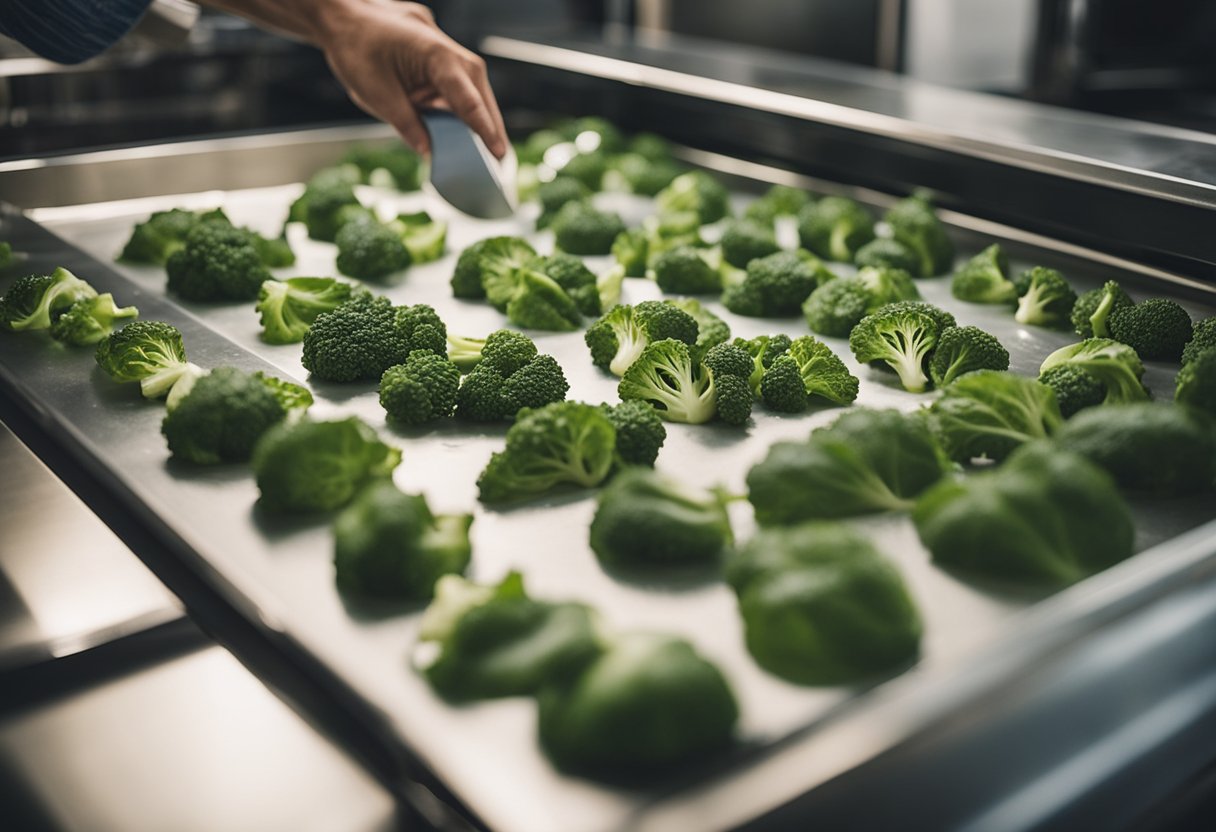
When it comes to food quality and nutritional value, both sous vide and steam oven cooking methods have their own advantages and disadvantages. Here are some of the key points to consider.
Impact on Vegetables and Vitamins
Sous vide cooking is known for preserving the flavor, texture, and nutrients of vegetables. Vegetables cooked sous vide retain more of their natural color, texture, and flavor. The vacuum-sealed bags prevent the vegetables from losing moisture, which helps to maintain their nutritional value.
Sous vide cooking also preserves vitamins and minerals better than traditional cooking methods, as the low temperatures used in sous vide cooking do not cause the loss of nutrients that can occur during high-heat cooking.
Steam oven cooking can also be a healthy option for cooking vegetables. Since steam ovens cook with moist heat, they help to retain the natural flavor and nutrients of the vegetables.
Steam ovens also cook vegetables quickly and evenly, which helps to preserve their nutritional value. However, overcooking vegetables in a steam oven can cause them to become mushy and lose some of their nutritional value.
Impact on Fish and Tender Meats
Sous vide cooking is particularly well-suited for cooking fish and tender meats. The low-temperature cooking method ensures that the fish or meat is cooked evenly and retains its natural moisture. This results in a tender, juicy, and flavorful dish. Sous vide cooking also preserves the nutrients and vitamins in fish and meat, making it a healthier option than other cooking methods.
Steam oven cooking can also be a good option for cooking fish and tender meats. The moist heat of the steam oven helps to preserve the natural moisture of the fish or meat, resulting in a tender and juicy dish.
However, steam ovens may not be as precise as sous vide cooking when it comes to temperature control, which can result in overcooked or undercooked dishes.
Overall, both sous vide and steam oven cooking methods have their own advantages and disadvantages when it comes to food quality and nutritional value. Choosing the right cooking method depends on the type of food being cooked and personal preference.
Practical Considerations
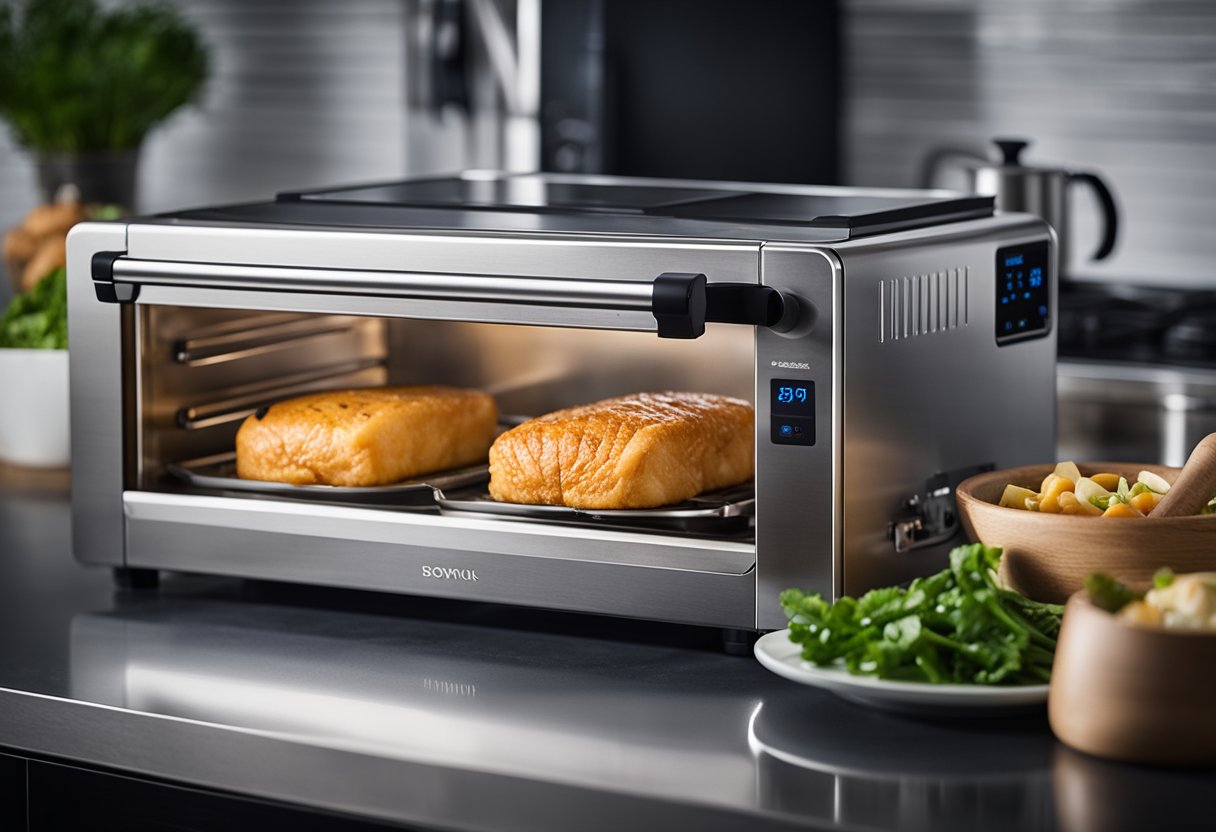
Kitchen Equipment and Investment
When it comes to kitchen equipment, both sous vide machines and steam ovens represent a significant investment. Sous vide machines are typically more affordable and can be found in a range of prices, from budget-friendly to high-end models. Steam ovens, on the other hand, tend to be more expensive, with prices ranging from several hundred to several thousand dollars.
Ease of Use and Versatility
Sous vide machines are generally very easy to use, with many models featuring intuitive controls and preset cooking programs. They also offer a high degree of versatility, allowing you to cook a wide range of foods to precise temperatures.
Steam ovens can also be easy to use, but they may require more time and effort to get the hang of. However, steam ovens offer a unique cooking method that can be used for a variety of dishes, including vegetables, fish, and meats.
Installation and Space Requirements
Both sous vide machines and steam ovens require a certain amount of space in your kitchen, and you’ll need to consider the installation requirements before making a purchase. Sous vide machines are typically compact and can be used on a countertop, while steam ovens are larger and may require professional installation.
If you’re working with a limited budget or have limited space in your home kitchen, a sous vide machine may be the more practical choice. However, if you have the space and budget for a steam oven, it can be a valuable addition to your kitchen equipment.
Temperature Control and Cooking Time
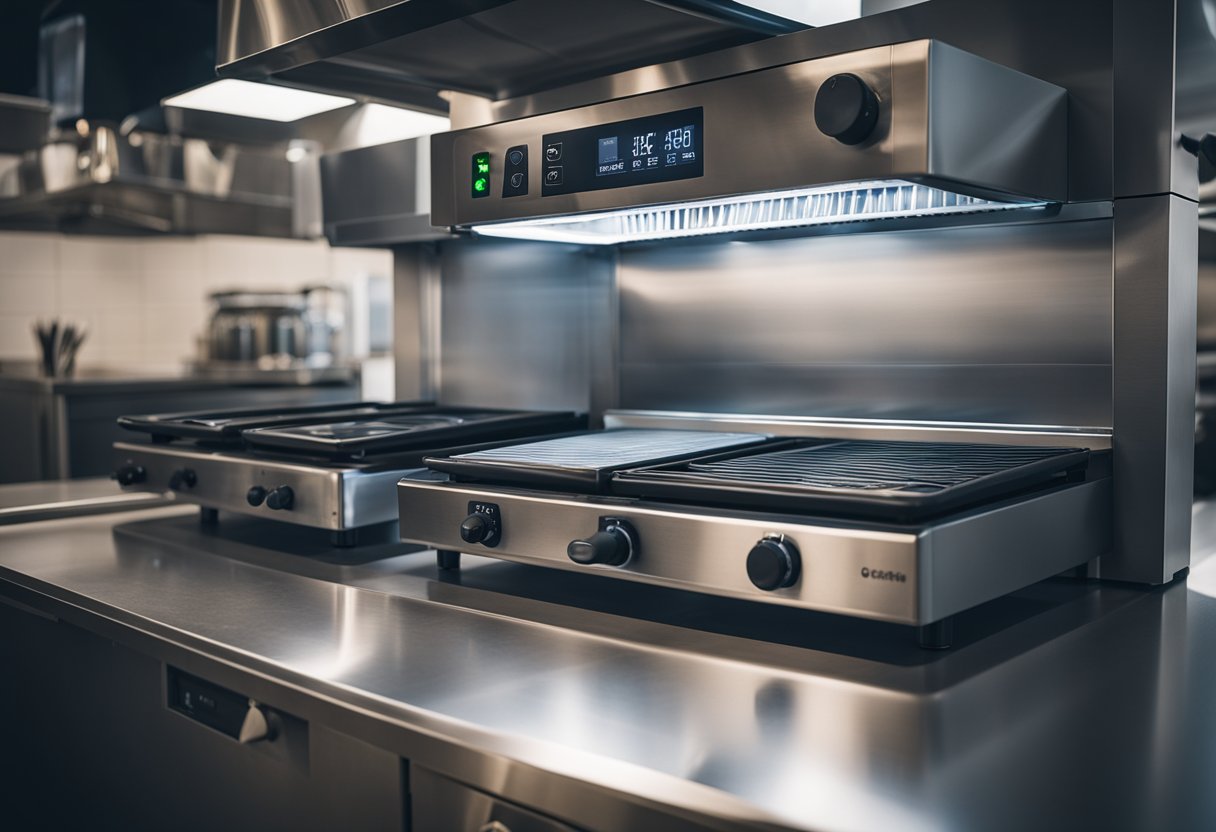
Precision in Sous Vide
One of the key advantages of sous vide cooking is the precise temperature control. Sous vide machines allow you to set the temperature to a tenth of a degree, ensuring that your food is cooked exactly the way you want it. This level of precision is particularly important for delicate foods, such as fish, that can be easily overcooked.
In addition to precise temperature control, sous vide cooking also allows for longer cooking times without overcooking the food.
This is because the food is cooked at a lower temperature than traditional cooking methods, which means that it takes longer to reach the desired level of doneness. However, this longer cooking time also means that you can achieve a more tender and flavorful result.
Efficiency of Steam Ovens
Steam ovens, on the other hand, cycle heat like traditional ovens, which means that there will be a wider temperature range.
While steam ovens do not offer the same level of precise temperature control as sous vide machines, they are still a highly efficient cooking method. Steam ovens cook food quickly and evenly, making them ideal for busy home cooks who want to prepare healthy meals in a hurry.
Another advantage of steam ovens is that they require very little oil or fat to cook food, making them a healthier alternative to traditional cooking methods. This is because the steam helps to lock in the natural flavors and nutrients of the food, eliminating the need for added fats and oils.
Overall, both sous vide cooking and steam ovens offer unique advantages when it comes to temperature control and cooking time. While sous vide cooking allows for precise temperature control and longer cooking times, steam ovens offer a quick and efficient cooking method that requires very little added fat or oil.
Choosing Between Sous Vide and Steam Oven
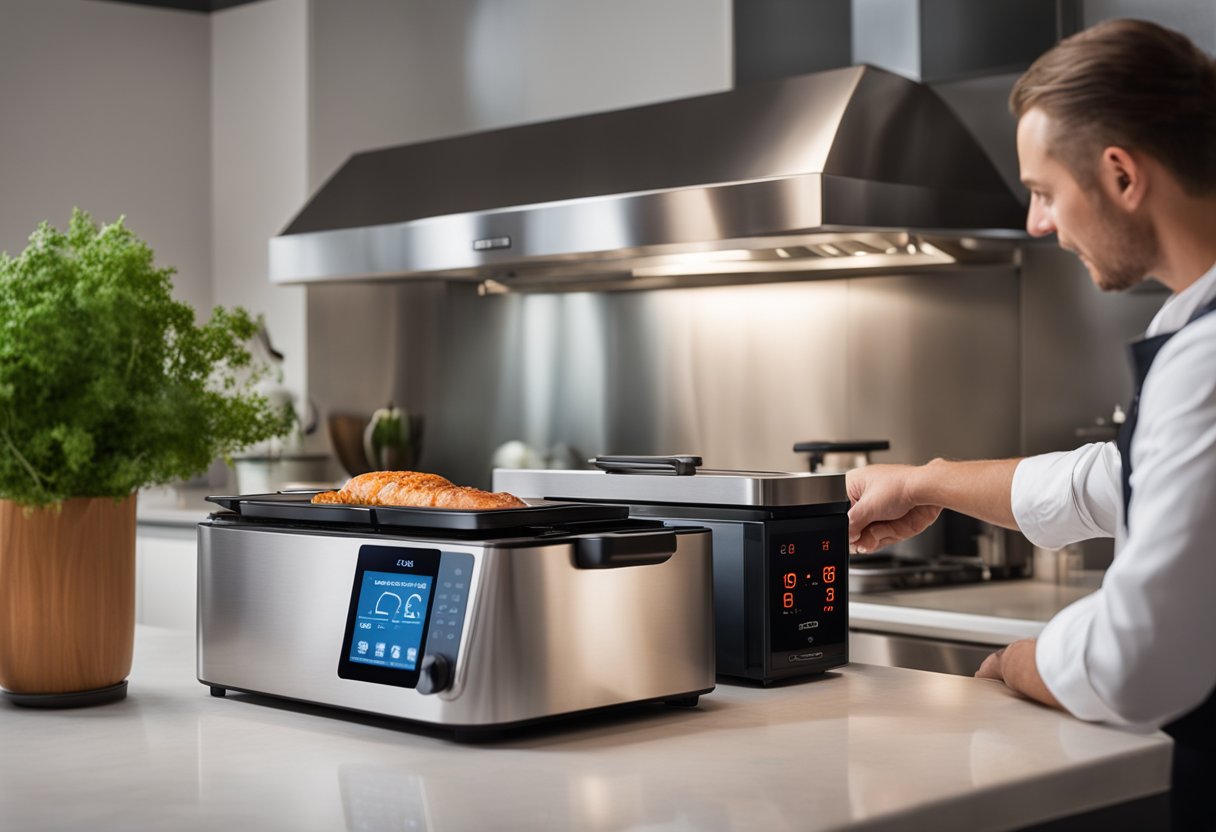
When it comes to choosing between sous vide and steam oven, there are several factors that can influence the decision. As with any cooking technique or equipment, personal preference and cooking style play a significant role in making a decision. Here are some factors to consider:
Factors Influencing Decision
Cooking Technique
Sous vide and steam oven are two very different cooking techniques. Sous vide involves cooking food in a vacuum-sealed bag in a precisely temperature-controlled water bath. Steam oven, on the other hand, uses moist heat to cook food. While sous vide allows for precise temperature control, steam oven offers a more hands-off approach to cooking.
Expensive or Budget
Sous vide equipment can be expensive, with some models costing hundreds of dollars. Steam ovens, on the other hand, can also be expensive, but there are more affordable options available. It is important to consider your budget when deciding between the two.
Personal Preference and Cooking Style
Personal Preference
Personal preference is a significant factor when deciding between sous vide and steam oven. Some people prefer the precise temperature control of sous vide, while others prefer the hands-off approach of steam oven. It is important to consider your personal preference when making a decision.
Cooking Style
Cooking style is another factor to consider. Sous vide is ideal for cooking meat, fish, and vegetables to a precise temperature, resulting in tender and juicy results. Steam oven is great for cooking vegetables, grains, and bread, as it provides a moist environment that helps retain moisture and texture.
In conclusion, choosing between sous vide and steam oven depends on personal preference, cooking style, and budget. While sous vide offers precise temperature control, steam oven provides a more hands-off approach to cooking. Ultimately, the decision comes down to what works best for you and your cooking needs.
Brand and Model Comparisons
Popular Sous Vide Machines
When it comes to sous vide machines, some of the most popular brands on the market include Anova, Joule, and ChefSteps. Anova offers a range of models, including the Anova Precision Cooker Pro and the Anova Precision Cooker Nano.
The Pro model is more powerful and has more features, while the Nano is more compact and budget-friendly. Joule, on the other hand, offers a single model that is known for its sleek design and powerful heating element. ChefSteps offers the Joule Sous Vide, which is similar to the Joule but comes with a larger water capacity.
Leading Steam Oven Brands
Miele, Bosch, Electrolux, and Asko are some of the leading brands when it comes to steam ovens. Miele offers a range of models that come with a variety of features, such as automatic programs and self-cleaning functions.
Bosch also offers a range of models, including the Benchmark Series Steam Oven, which comes with a large water tank and a variety of cooking modes. Electrolux offers a range of steam ovens that come with features such as Perfect Taste technology and a variety of cooking modes. Asko offers a single steam oven model, which comes with a variety of cooking modes and a large water tank.
Overall, when comparing sous vide machines and steam ovens, it’s important to consider factors such as budget, features, and cooking style. While sous vide machines offer precise temperature control and consistent results, steam ovens offer a faster cooking time and the ability to cook multiple dishes at once.

